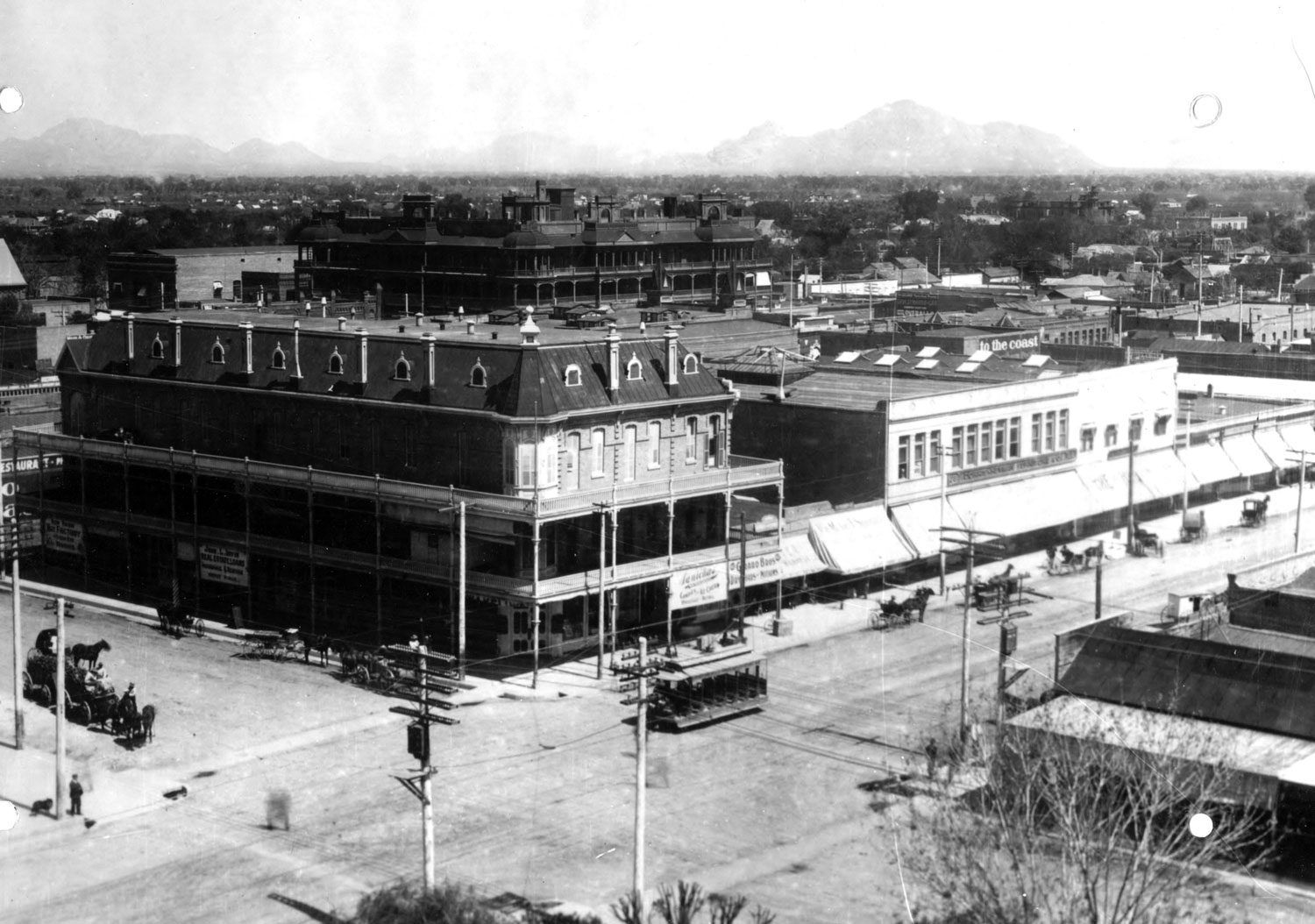The Downtown YMCA: Keeping Phoenix Fit Since 1892

For those searching for a pick-up basketball game or iron to pump, the Young Men’s Christian Association (YMCA) has long been the go-to place in Phoenix. Although calisthenics classes have given way to Zumba exercise and Lycra outfits have replaced white cotton t-shirts for workout gear, the YMCA continues to provide a healthy environment for mind, body, and spirit. This mission has not changed since the YMCA opened in Downtown Phoenix 130 years ago when Arizona was still a territory.
The Downtown YMCA’s first location, in 1892, was on the ground floor of a two-story building located at First and Washington streets. By 1911, the YMCA had moved into its own building, a three-story structure located at Second Avenue and Monroe Street. The facility featured rooms for residents, a gymnasium, a swimming pool, and a club room. The building had a fourth floor added in 1915. To house servicemen passing through Phoenix during World War II, the YMCA added a dormitory to the roof in 1942.

By 1944, Phoenix had outgrown the YMCA’s facility and a kickoff dinner was held at the Westward Ho to launch a $500,000 campaign to construct a new building. Fundraising efforts were quickly met, but World War II delayed construction. The YMCA hired the architecture firm Lescher and Mahoney to design the building, which reflected Cold War fears by featuring Downtown’s largest civil defense shelter.
The red-brick, seven-story YMCA eventually opened in 1952 and hosted more than 18,000 people during Open House Week. One fan was a young Robert Pickrell, a future Arizona Attorney General and Superior Court judge, who had his office adjacent to the facility. He initially had few clients, which allowed him to play handball next door frequently.

“If someone walked into Bob’s office, his secretary would alert him via a call to the YMCA desk manager,” laughs his cousin and former YMCA board member, Tom Pickrell. “Bob would run back to his office by way of the back door so that he could greet his prospective client as if he had been working in his office the whole time.”
But while programs and membership evolved, the mid-century building did not. “During a rainstorm in 2003, I taught a yoga class with students interspersed with a half-dozen buckets collecting dripping water,” recalls former YMCA fitness instructor Wendy Reese. She told her class, “It just wouldn’t be a YMCA if the roof didn’t leak.”

Similar maintenance issues prompted another generous donation by the Lincoln family that led to a $6.9 million building renovation in 2006. The facility was then renamed the Lincoln Family Downtown YMCA. In 2013, it partnered with ASU on a $25 million addition that added 75,000 square feet for Sun Devil students.
The facility retains a community vibe of building relationships as well as burning calories. “For many of us, our daily lunchtime trip to the Downtown YMCA is the best part of the day,” Tom Manos, former Maricopa County manager, says. “It’s like recess for adults, where for one hour, we forget about our daily challenges and just enjoy each other’s company.”
About the author: Douglas Towne helped Lincoln Family Downtown YMCA members expand their artistic horizons as they shrank their waistlines with the debut exhibit at the Y Not Art Gallery in 2009. His “Classic Kitsch Considered: How We Ate, Slept and Played” consisted of floating montages that incorporate vintage commercial imagery and are as much social commentary as they are an homage to the past.